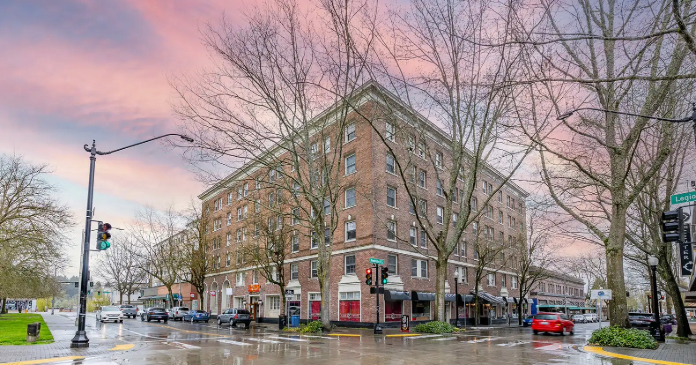The days of high vacancy rates and the industry’s long battle with concessionitis, may soon be a distant memory say experts from leading apartment firms, the National Multi Housing Council, the National Association of Realtors, the Urban Land Institute, and Pricewaterhousecoopers LLP.
While real estate investors generally express cautious optimism regarding industry performance in 2005, concerns over the economy and job growth, coupled with the likelihood of higher interest rates, are causing pundits to hold back their expectations, according to Emerging Trends in Real Estate 2005, a major forecast report just released by the Urban Land Institute (ULI) and Pricewaterhousecoopers.
Although rising interest rates may dampen the single family housing market, it is expected to be a boon to multifamily. There have been enough sound economic indicators in recent months to point to a pick up in the job market, a pivotal factor in any recovery.
After years of flat rent growth and increasing vacancy rates, conditions in the apartment industry are clearly recovering, according to the National Multi Housing Council’s (NMHC) October 2004 quarterly Survey of Apartment Market Conditions. The survey’s indexes measure changes in occupancy rates, sales volume, availability of equity and debt market conditions between July 2004 and October 2004. For only the second time in the survey’s five-year history, all four indexes recorded improvement compared with three months earlier. The first time was January 2004.
“After a slow start, the apartment industry is now seeing signs of a real recovery,” noted NMHC Chief Economist Mark Obrinsky. “The combination of modest economic growth, strong demographic trends, and the rising cost of home-ownership compared with renting is leading to greater demand for apartment residences. Right now the only thing holding the industry back is the still-weak labor market.”
HIGHLIGHTS OF THE SURVEY
The Market Tightness Index, which reflects changes in vacancy rates and rent increases, came in at 60, the fifth consecutive quarter of improving demand.
Apartment property sales continue to post record high levels. The Sales Volume Index hit 65 this quarter, the highest level ever. Sales of apartment properties in 2004 are expected to top last year’s record volume.
VIEW FROM THE TOP
When asked about his take on the current and future status of the apartment market at a recent investor conference call, Richard J. Campo, Chairman of the Board of Trust Managers and CEO of Camden Properties Trust, said, “I think what gets us comfortable is we believe that we’re in the trough of the recession and that the multifamily dynamics are going to turn up positive here in the next year or so.”
Commenting about Camden’s recent acquisition of Summit Properties, Campo said, “If you asked me a year ago I would never have done this transaction last year at this time because I didn’t feel like the market had bottomed and that we were getting ready for an upturn and I think that’s where we are today. So the difference in our mentality is that we think we’re at the bottom and going to move up.”
D. Keith Oden, President, Chief Operating Officer and Trust Manager of Camden, said, “As far as the economy, we’re optimistic. The market seems to be underestimating the terrific cash flow and potential the whole industry’s going to have in 2005.”
“The development business has been under pressure not just from the weakness of the markets but also increasing cost,” added Campo. “Costs have increased tremendously in the last 12 to 18 months so development yields have been a challenge to keep up.”
Major apartment REIT Archstone-Smith announced their same-store portfolio produced positive year-over-year revenue growth for the first time in 10 quarters. Third-quarter results showed same-store revenues were up 0.6% from the same period last year.
“We are pleased to achieve positive same-store revenue growth in our portfolio as pricing power returns to our core markets,” said R. Scot Sellers, chairman and chief executive officer. “We are optimistic that both our same-store revenue and NOI growth will continue to steadily improve as we move into 2005, reflecting the increases in rental rates we have implemented in many of our markets during the last several months.”
In reporting their third-quarter results, Bruce W. Duncan, Equity Residential’s President and CEO said, “Business continues to improve in almost all of our markets as evidenced by the second quarter in a row of year over year positive same store revenue growth. This is something we have not experienced since 2001. As a result of the work we have done over the past two years to aggressively reconfigure our portfolio and enhance our operations, we are well positioned to take advantage of the improving economic fundamentals.”
Total revenues for Equity Residential from continuing operations for the quarter were $491.5 million compared to $438.8 million in the third quarter of 2003.
EMERGING TRENDS
ULI-PriceWaterhouse Coopers’ Emerging Trends Report points out the industry’s need to rein in new development and cool some oversupplied markets. The pace of construction has not slowed since the recession of the early 1990s and there is the possibility that property values may flatten.
According to the report, the best bet for multifamily acquisitions will be in the class B and C apartment properties in high-cost housing markets with ample demand from permanent renters: southern California, San Francisco, the Northeast and Chicago. The final word on multifamily prospects for the coming year, says the report, is: “apartments are coming back, but expect the recovery to be gradual.”
THE NAHB PERSPECTIVE
NAHB reports starts rose across the board in October, with substantial gains registered in both the single- and multifamily sectors as well as in every region of the country. Multifamily starts bounced up 9.5 percent to a seasonally adjusted annual rate of 382,000, the fastest pace since December of 2003.
“Excellent financing conditions are still the key to solid housing market performance, including much of the strength on the condo side of the multifamily market,” said NAHB Chief Economist David Seiders. “Improving economic conditions particularly job and income growth, are additional factors in housing’s favor heading forward — and solid increases in house values continue to buoy demand.”
NAR’s FORECAST
David Lereah, NAR’s (National Association of Realtors) chief economist noted the commercial sector has been relatively flat this year. “The commercial real estate recovery has been taking some time to materialize because the growth in the economy hasn’t translated into a stronger job market — but that will improve and should be apparent a year from now with unemployment expected to drop to 5.6 percent by the fourth quarter of 2004.”
According to Lereah, the apartment rental market is forecast to experience a net absorption of 164,300 units next year, up from 122.0 million anticipated in 2003. The average vacancy rate is expected to drop to 6.6 percent in 2004 from 7.1 percent this year, with average rent expected to rise 2.1 percent in 2004 and 3.0 percent in 2005 after declining 0.8 percent this year.
RED CAPITAL SEES RALLY IN 2005
In a special report on the outlook for the multifamily industry and the national economy for 2005, Daniel J. Hogan, director of research for the Red Capital Group, a leading integrated capital provider for multifamily and a top ten Fannie Mae DUS and top ten FHA lender nationwide, sees recovery on the way.
Barring an extended slump in hiring, Hogan sees net absorption in metro areas totaling about 50,000 units in the second half of 2004. Demographic changes and a pickup in jobs should translate into a 25 to 40 basis point improvement in the market vacancy rate for 2005. He also sees rent increases likely until the national market returns to equilibrium, which may take several years for most metro markets.
Look for class-A and urban in-fill properties to outperform class-B, C and suburban properties. Despite the recent three-year low performance, investor demand for multifamily assets remains strong. Benefiting from strong capital appreciation, multifamily assets delivered investors the highest total returns in nearly three years. Apartments continue to deliver the best risk-adjusted returns of any commercial real estate asset class.















